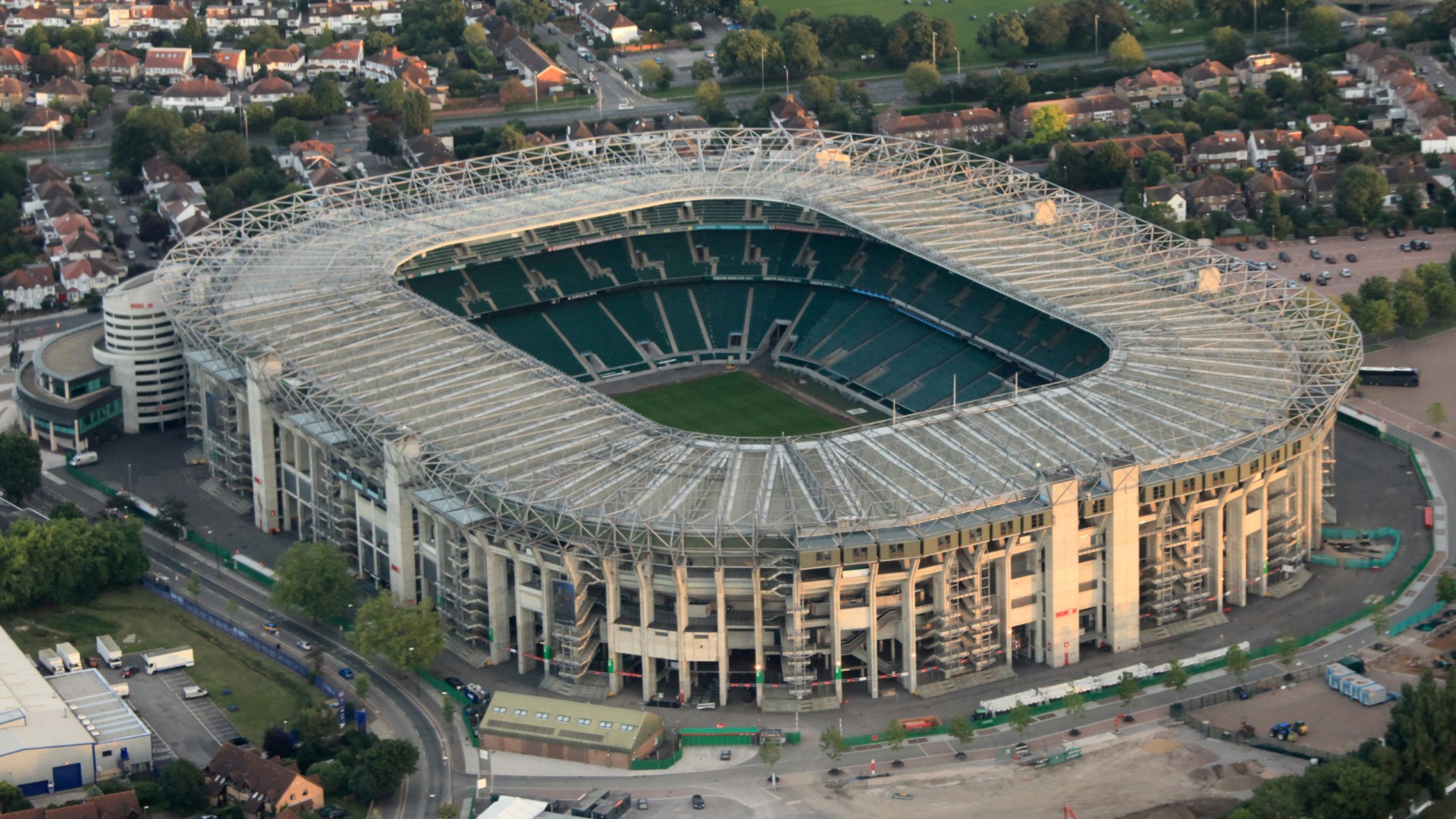Tour Twickenham, the World’s Largest Rugby Stadium
Twickenham Stadium is the home of England Rugby and is, with a capacity of 82,000 the world’s largest rugby union venue and the UK’s second-largest stadium after Wembley
Highlights
- Find out about players’ weird and wonderful pre-match rituals during one of the stadium tours on offer
- Take a selfie or several next to the huge (27 feet in height) statue of line-out rugby players on Rugby Road
- Run through the tunnel from the dressing room onto the pitch; this is a particular favourite for the kids
What to see and do
Take one of the stadium tours to see behind the scenes
Great fun for adults and children alike, the 80-minute, all-access tours take rugby fans into the England team dressing room, into the royal box and VIP areas, through the tunnel, and to the top of the stands. You can sit in your favourite player’s seat and imagine what it’s like to be seconds away from a game.
Go on a trip through time
Spend time in the World Rugby Museum, which takes you through history from the early origins of the game to the present. There’s a huge collection of rugby memorabilia from the RFU Collection, the Harry Langton Collection, and the RFU Rugby Archive. You’ll see the oldest international jersey from the first England match in 1871 and the Calcutta Cup. You might also like to test your commentary skills there, too.
Head to the gift shop
Shop from the largest selection of replica England kits, as well as an equally wide selection of England Rugby, branded clothes, souvenirs, and other gifts. You can also find international shirts, training wear, and equipment.
Did you know? (5 Interesting Facts)
- Twickenham Stadium wasn’t always as glamorous as it is now. The land it stands on used to be used for growing cabbages, so its nickname (all affectionate, of course) is the Cabbage Patch.
- The land was bought for £5,500 in 1907 and the first stands were built early the next year, with the first match – Harlequins v Richmond – being played on October 2, 1909.
- Despite hosting thousands of rugby games, including World Cup matches and semi-finals for more than a century, it was only in 2016 that another sport came to Twickenham. On October 23, 2016, the New York Giants beat the Los Angeles Rams 17-10 in an NFL game.
- The first-ever rugby match to be broadcast on radio – England v Wales – was played at Twickenham in 1927. Just 11 years later, Twickenham chalked up another first when it hosted the first rugby game to be broadcast on TV – the 52nd Calcutta Cup – on March 19, 1938.
- It seems Twickenham always wants to be ahead of the crowd as it was also the first European stadium to have unlimited Wi-Fi.
History
- 1906: The RFU decided it needed its stadium so it bought a former cabbage patch in Twickenham.
- 1910: The stadium is completed, with a capacity of 20,000, and the stadium hosts what’s now known as the Six Nations Championship (it was formerly the Five Nations).
- 1918: World War I started and seven members of the 1913-1914 England squad lost their lives in the conflict. The stadium was reverted to a grazing area for horses and other livestock as part of the war effort.
- 1920: After World War I ended, the existing two stands were expanded and a third was added, bringing the capacity up to 43,000.
- The 1940s: World War II cost the England squad more players, including the “Prince of Pace”, Alexander Obolensky. His plane crashed in 1940, killing him at the age of 24. A V2 rocket hit the stadium in January 1945.
- 1988: “Swing low, sweet chariot,” is heard from the crowd for the first time during the last match of the season when Chris Oti helps England to come back against Ireland in the second half. This song is now a firm tradition.
- 2004: Another redevelopment expands the stadium to 82,000, bringing in a four-star hotel, a performing arts complex, and a health club.
- 2018: The East Stand gets a makeover with a new seating plan, some new restaurants, and two new hospitality venues.
Facilities and accessibility
Twickenham Stadium is wheelchair-accessible throughout and there are also accessible toilets at several locations (you’ll need a Radar key). For matches, there are wheelchair bays at the pitch side and higher levels, with space for 336 people.
Assistance dogs are welcome throughout the stadium and there is also hearing loop access for people with hearing or visual impairments (on match days). You’ll need to apply for a ticket for your dog to attend a match with you.
There are baby changing facilities throughout the stadium, but no bottle or food warming equipment. The stadium has plenty of ramp access throughout, too, although prams aren’t allowed through the turnstiles into the spectator areas.
The stadium has several bars and restaurants for visitors and spectators. All of these facilities are cashless, although if you need a cashpoint there’s one to the right of the England Rugby Store.
The nearest tube stations are Hounslow East (Piccadilly Line) and Richmond (District line).
On match days (if more than 35,000 spectators are expected), there are RFU shuttle bus services between Hounslow East and Richmond and the stadium.
